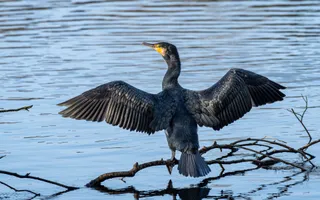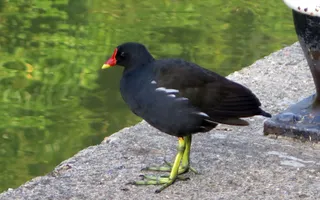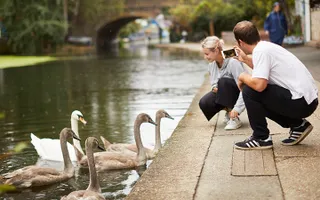They’re both black, pre-historic-looking birds that dive for fish and hang their wings out to dry in a familiar regal pose. It can be hard to tell the difference, especially when you see an individual by itself.
Download your free nature guide
Identify footprints and read fascinating facts about the creatures who make their homes along our canals and rivers










